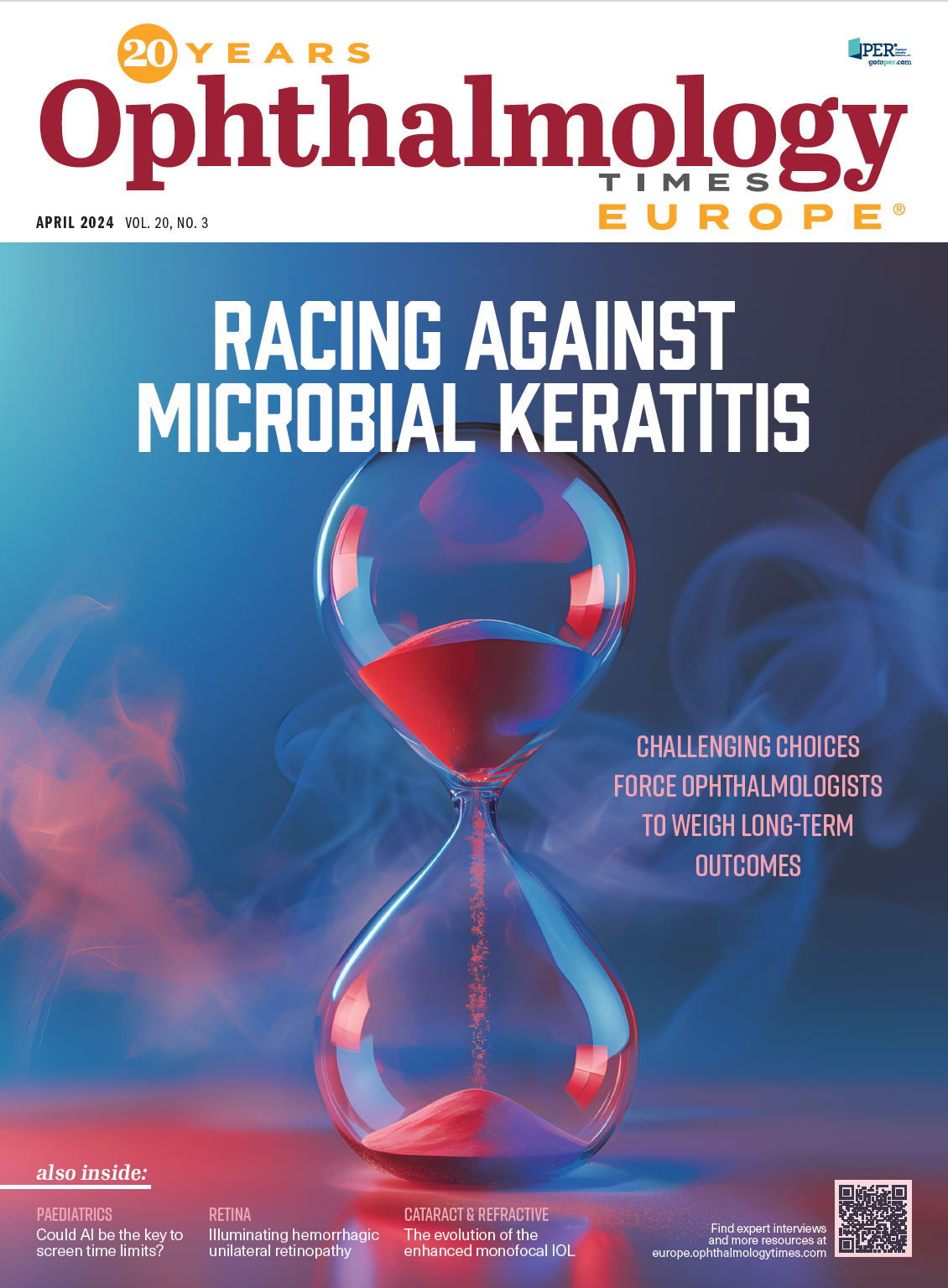Hemorrhagic unilateral retinopathy: No proven aetiology for rare condition
Multimodal imaging and a systemic work-up failed to identify any underlying disorder for the hemorrhages
Hemorrhagic unilateral retinopathy is a rare enigmatic disorder that has been reported in the literature in only about 15 cases1,2 since it was first described in 2001.1
Alexandra Miere, MD, PhD, and colleagues from the Department of Ophthalmology, Intercity Hospital, Creteil, and the Ophthalmic Center for Imaging and Laser, Paris, France, recently described a case series of three patients with hemorrhagic unilateral retinopathy in whom the hemorrhages resolved uneventfully over a short period,3 and they discussed how the cases differ from other conditions characterised by retinal hemorrhages.
Case series characteristics
All patients, i.e., a 51-year-old woman (case 1), a 74-year-old man (case 2), and a 52-year-old man (case 3) presented to the ophthalmology emergency department with acute floaters, blurred vision or central scotoma in one eye. The best-corrected visual acuities (VAs) were 20/20 in the affected eye in two patients with a paracentral scotoma and 20/160 VA in the third patient.
In the three patients, fundoscopy showed multiple unilateral posterior hemorrhages in the Henle fiber layer in the macula; spectral-domain optical coherence tomography (SD-OCT) showed hemorrhages under the internal limiting membrane around the optic disc. No vascular abnormalities were apparent on fluorescein angiography and indocyanine green angiography (ICGA). SD-OCT angiography (SD-OCTA) did not reveal capillary dropout or choroidal abnormalities. The visual symptoms resolved completely within a few weeks, with spontaneous regression of the hemorrhages.
Case 1 Patient, with the exception of well-controlled asthma, had no abnormalities identified by blood testing and a cardiovascular workup. She reported having traveled on several pressurised commercial flights a few weeks earlier but denied any traumatic episodes.
Case 2 Patient had stage 3 chronic obstructive pulmonary disease (COPD) with severe hypoxemia, systemic hypertension, and stage 3 chronic kidney disease. The blood pressure was well controlled at 125/70 using beta-blockers. A blood test did not show any abnormal blood cell count or coagulopathy. Ultrasonography of the supra-aortic trunks did not show any relevant abnormalities.
Case 3 Patient had an unremarkable medical history with the exception of smoking. A blood test showed a normal blood cell count without other abnormalities or signs of thrombophilia. The cardiovascular examination that included electrocardiography, ambulatory blood pressure monitoring, and a carotid ultrasound was normal. The results of brain magnetic resonance imaging were unremarkable. The patient had not had a recent trauma and had not performed intense physical activity or Valsalva maneuvers within the last few days.
Diagnostic considerations
Retinal hemorrhages are not uncommon; however, in association with other disorders, other conditions based on the type/number of hemorrhages, clinical history, associated fundus findings, and systemic assessment of the patient allow identification of vascular occlusive diseases or diabetic and hypertensive retinopathies.
Other conditions, such as vasculitis, high-altitude retinopathy, anemic retinopathy, Valsalva retinopathy, coagulopathies, hyperviscosity syndrome, leukemia, Purtscher retinopathy, Terson syndrome, 3’4-methylenedioxymethamphetamine toxicity, familial retinal arteriolar tortuosity and blunt trauma can be diagnosed less frequently.2,4-7
Despite the rarity of hemorrhagic unilateral retinopathy, Dr Miere and colleagues explained that they considered the diagnosis in their patients because of the presence of 2 types of unilateral intraretinal hemorrhages only in the posterior pole, ie, superficial hemorrhages under the internal limiting membrane and often around the optic disc, and petaloid hemorrhages that appeared radially around the macula in the Henle fiber layer. The petaloid hemorrhages have been associated with numerous aetiologies such as acute blunt head trauma, Terson syndrome, general anesthesia, epidural anesthesia, hypertension with anemia, ocular decompression retinopathy, vitrectomy with intraocular gas, retinal vein occlusion, myopic degeneration, macular telangiectasia type 2 and polypoidal choroidal vasculopathy,8 according to Dr Miere.
Imaging
As in other studies, no abnormalities except masking, normal capillary perfusion, no vessel leakage and no delayed arteriovenous flow1 were seen on fluorescein angiography (FA). Possible delayed retinal arteriovenous transit was reported in four of 10 eyes.2 Dr Miere and colleagues confirmed the absence of arterial filling on FA. ICGA and SD-OCTA, respectively, did not show any choroidal abnormalities or retinal capillary abnormalities.
The authors explained that hemorrhagic unilateral retinopathy is similar to Valsalva-related hemorrhages, except for its strict unilaterality. However, they advised that other aetiologies with scattered retinal hemorrhages should be ruled out.
“A systemic work-up, including blood testing with complete blood count, erythrocyte sedimentation rate, blood glucose level, lipid profile, protein electrophoresis, coagulation panel and autoimmune profile could be recommended, in association with a carotid artery examination. Brain and orbit magnetic resonance imaging should be considered in case of vitreous hemorrhages to rule out a subarachnoid hemorrhage in Terson syndrome, secondary to a sudden rise in intracerebral pressure,”9 they commented.
Possible aetiologies
The authors hypothesised that hypoxemia may have triggered the hemorrhages, in that one patient was a frequent flier, one patient had advanced COPD with chronic hypoxemia, and one patient was a smoker.
A previous study1 reported that a patient who flew from Australia to England developed hemorrhagic unilateral retinopathy 2 days later, and another reported that partial hypoxemia can occur during high-altitude commercial flights and trigger pathological disorders in some individuals.10
However, the authors pointed out, the unilaterality of the pathology does not support high-altitude retinopathy as a cause, although it cannot rule it out. The case 1 patient had taken a long-haul flight 2 weeks before presentation but she continued to fly once a month, and the intraretinal hemorrhages did not recur in either eye, they explained.
In conclusion, hemorrhagic unilateral retinopathy differs from other causes of retinal hemorrhages in unilaterality and the spatial topography of the hemorrhages. The investigators advised that hemorrhagic unilateral retinopathy should remain a diagnosis of exclusion after a systemic work-up.
“In the present series,” they said, “multimodal imaging and the systemic work-up failed to identify any underlying disorder. Further case reports are needed to better understand the possible triggering factors, including hypoxia. The sudden occurrence of retinal hemorrhages is a source of anxiety and concerns. However, the present series confirmed the favorable prognosis of the condition, with spontaneous regression of visual symptoms and hemorrhages.”
References
1. Baker GR, Grey RH. Benign idiopathic haemorrhagic retinopathy. Eye (Lond). 2001;15(pt 3):267-273. doi:10.1038/eye.2001.92
2. Kon Graversen VA, Jampol LM, Meredith T, et al. Hemorrhagic unilateral retinopathy. Retina. 2014;34(3):483-489. doi:10.1097/IAE.0b013e3182a48759
3. Torrell-Belzach N, Miere A, Souied EH, Gaudric A, Cohen SY. Hemorrhagic unilateral retinopathy: a report of multimodal imaging in three cases. Retin Cases Brief Rep. Published online March 1, 2024. doi:10.1097/ICB.0000000000001557
4. Pruett RC, Carvalho ACA, Trempe CL. Microhemorrhagic maculopathy. Arch Ophthalmol. 1981;99(3):425-432. doi:10.1001
/archopht.1981.03930010427005
5. Pitta CG, Steinert RF, Gragoudas ES, Regan CD. Small unilateral foveal hemorrhages in young adults. Am J Ophthalmol. 1980;89:96-102. doi:10.1016/0002-9394(80)90235-4
6. Zago Ribeiro L, Lima LH, Farah ME. Multimodal evaluation of unilateral multilevel retinal hemorrhages. Ophthalmol Retina. 2022;6(11):1008. doi:10.1016/j.oret.2022.07.007
7. Jacks AS, Hykin PG. Retinal haemorrhage caused by “ecstasy.” Br J Ophthalmol. 1998;82(7):842-843. doi:10.1136/bjo.82.7.841b.
8. Baumal CR, Sarraf D, Bryant T, et al. Henle fibre layer haemorrhage: clinical features and pathogenesis. Br J Ophthalmol. 2021;105(3):374-380. doi: 10.1136/bjophthalmol-219315443.
9. Weingeist TA, Goldman EJ, Folk JC, Packer AJ, Ossoinig KC. Terson’s syndrome: clinicopathologic correlations. Ophthalmology. 1986;93(11):1435-1442; doi:10.1016/s0161- 6420(86)33548-6
Dr Alexandra Miere

10. Cottrell JJ. Altitude exposures during aircraft flight: flying higher. Chest. 1988;93(1):81-84. doi:10.1378/chest.93.1.81
Alexandra Miere, MD, PhD | E: alexandramiere@gmail.com
Miere is an Associate Professor of Ophthalmology, University Paris Est Créteil, France. She is also an honorary research fellow in medical retina at Moorfields Eye Hospital, London, and the 2024 recipient of the Gabriel Coscas prize from the French Retina Society.
